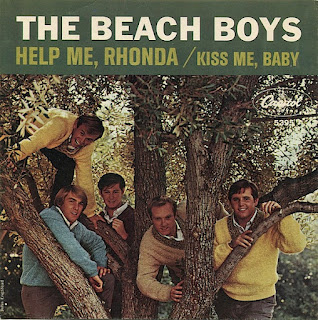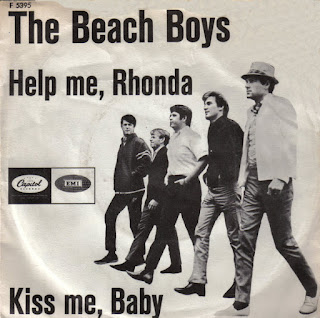MICHAEL JACKSON - THRILLER
Llançament: Novembre de 1983 (Regne Unit) 23 de gener de 1984 (Estats Units)
Llistes: Regne Unit: #10 Estats Units: #4
La cançó “Thriller”, escrita per Rod Temperton, es va llançar com a setè i últim single de l’icònic àlbum del mateix nom de Michael Jackson. Va sortir l’11 de novembre de 1983 al Regne Unit i el 23 de gener de 1984 als Estats Units. Temperton també va escriure “The Lady in My Life” i “Baby Be Mine” per a l’àlbum “Thriller”, que van ser les úniques pistes que no es van publicar com a singles.
“Thriller” va començar com una cançó més optimista anomenada “Starlight”, però Michael Jackson i el productor Quincy Jones van suggerir que tindria més impacte amb un to més fosc. Així, el lletrista Rod Temperton va reimaginar la lletra, convertint-la en un homenatge als clàssics del terror. La interpretació dinàmica de Jackson va donar vida al nou concepte aterridor, convertint “Thriller” en una peça icònica que celebrava el costat divertit de la por.
La narració final va ser interpretada per l’aclamat actor de terror Vincent Price. La seva part inclou la línia “Must stand and face the hounds of hell” (cal enfrontar els gossos de l’infern), inspirada en “El gos dels Baskerville”, la novel·la clàssica de Sherlock Holmes escrita per Sir Arthur Conan Doyle. La narració sinistra de Price i la seva rialla icònica van amplificar l’atmosfera de terror de la cançó, convertint-se en un dels moments més memorables de l’àlbum.
El videoclip es va convertir en un fenomen cultural revolucionari, introduint elements com la coreografia elaborada, els vestits i el diàleg, i transformant els videoclips en mini pel·lícules. La versió llarga, de gairebé 14 minuts, va establir un nou estàndard per a la narrativa en videoclips musicals. MTV normalment emetia una versió més curta de cinc minuts, que mantenia part de la història però eliminava gran part de l’escena inicial de la “pel·lícula dins d’una pel·lícula”. La dansa icònica al cementiri també va ajudar a popularitzar la coreografia sincronitzada en els vídeos musicals de pop, influenciant nombrosos artistes i establint un nivell alt per a la narrativa visual en la música.
Al videoclip, ambientat als anys 50, Michael Jackson i una jove anomenada Ola Ray es troben abandonats en una zona boscosa després de quedar-se sense gasolina. Quan s’endinsen al bosc, ella accepta ser la seva xicota, però ell l’avisa que no és "com els altres nois" i es transforma en un home-llop, atacant-la. Al present, Jackson i la seva xicota estan veient una pel·lícula de homes-llop en un cinema. Espantada per la pel·lícula, ella marxa, i Jackson la segueix, interpretant la cançó mentre caminen per un carrer de la ciutat durant la nit.
Quan passen per un cementiri, els zombis surten de les seves tombes i els envolten. Jackson es transforma en zombi i s’uneix al grup en una coreografia amb la cançó. Després torna a la seva forma humana per cantar la tornada i lidera els zombis mentre persegueixen la seva xicota fins una casa abandonada. Ella crida i es desperta, adonant-se que tot era un malson. Tanmateix, mentre Jackson la consola, es gira cap a la càmera, somriu i revela els ulls de home-llop, deixant un gir esgarrifós al final.
El videoclip es considera el més famós de la història, almenys segons la Biblioteca del Congrés dels Estats Units, que el va afegir al seu National Film Registry el 2009, el primer videoclip en el seu registre.
MICHAEL JACKSON - THRILLER
Released : November 1983 (U.K.) January 23, 1984 (U.S.)
Charted: UK: #10 US: #4
Michael Jackson's song "Thriller," written by Rod Temperton, was released as the seventh and final single from his iconic album of the same name. It came out on November 11, 1983, in the UK and on January 23, 1984, in the US. Temperton also wrote "The Lady in My Life" and "Baby Be Mine" for the “Thriller” album, which were the only tracks not released as singles.
"Thriller" began as a more optimistic song titled “Starlight”, but Michael Jackson and producer Quincy Jones suggested it would be more impactful with a darker tone. Songwriter Rod Temperton was tasked with reimagining the lyrics, transforming it into a playful homage to classic horror. Jackson's dynamic performance then brought the new, haunting concept vividly to life, turning "Thriller" into an iconic piece celebrating the fun side of fear.
The ending narration of "Thriller," was delivered by renowned horror actor Vincent Price. His part includes the line "Must stand and face the hounds of hell," inspired by “The Hound of the Baskervilles”, the classic Sherlock Holmes novel by Sir Arthur Conan Doyle. Price’s sinister narration and iconic laugh amplified the song’s horror atmosphere, making it one of the most memorable moments in the album.
The music video became a groundbreaking cultural phenomenon, introducing elements like elaborate choreography, costumes, and dialogue, effectively transforming music videos into mini-movies. The long version, nearly 14 minutes in length, set a new standard for music video storytelling. MTV typically aired the shorter, five-minute edit, which kept part of the storyline but removed much of the initial "movie-within-a-movie" scene. The iconic graveyard dance also helped popularize synchronized group choreography in pop music videos, influencing countless artists and setting a high bar for visual storytelling in music.
In the music video, set in the 1950s, Michael Jackson and a young woman named Ola Ray find themselves stranded in a wooded area after running out of gas. As they venture into the forest, she agrees to be his girlfriend, but he warns her that he is "not like other guys" and transforms into a werecat, attacking her. In the present, Jackson and his girlfriend are watching a werecat film in a theater. After being frightened by the movie, she leaves, prompting Jackson to tease her by performing the verses of "Thriller" as they walk down a city street at night.
As they pass a graveyard, zombies emerge from their graves, surrounding them. Jackson transforms into a zombie and joins the horde in a choreographed dance to the song. He then shifts back to his human form to sing the choruses, leading the zombies as they chase his girlfriend into an abandoned house. She screams and wakes up, realizing it was all a nightmare. However, as Jackson comforts her, he turns to the camera, grinning and revealing his werecat eyes, leaving a chilling twist at the end.
The music video is considered the most famous music video of all time, at least by the Library of Congress, which added it to its National Film Registry in 2009, the first music video in their registry.





















